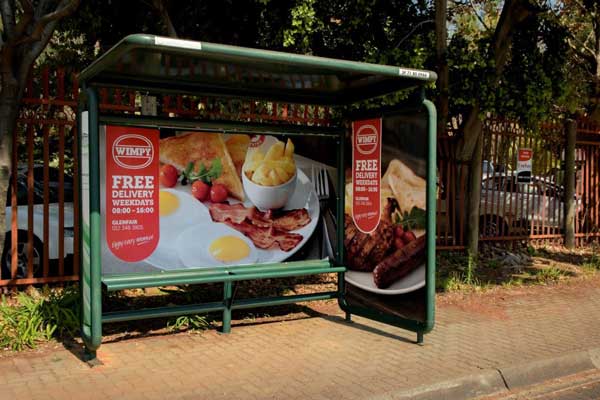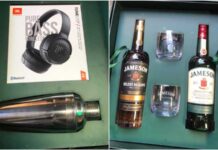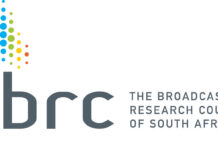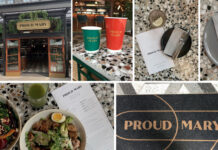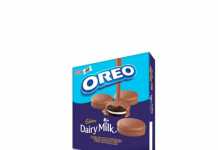When it comes to marketing FMCG products, one would presume that virtually every consumer is a target, and that the brand communication is going to reach those targets across the entire demographic spectrum. The default platforms for most brands are broadcast, TV, print, large format Out-of-Home (OOH) and more recently online and social media. However small format OOH, one of the most effective platforms driving engagement and influencing purchasing decisions, is often ignored. A fact FMCG brands would do well to rectify.
Marketers tend to focus on the affluent consumer because it appears to make more sense – they have greater spend and tend to be keen on trying new brands. But the often neglected lower to mid-level consumer can do a lot for your brand. Particularly among those in the LSM 3-6 category who have discretionary spend for items they want as opposed to need, such as fast-moving consumer goods (FMCG) and basic household appliances.
Lower income earners account for 42% of all spend in South Africa according to Statistics SA. PwC estimates that by 2016, some 11 million households are expected to have annual incomes of about R89 500 – a level that gives them discretionary spending for a far wider range of consumer goods, as in other emerging markets. (i) Who wouldn’t want to reach and convert consumers in this lucrative yet frequently taken-for-granted market, of which significant growth is expected?
Marketers may find it tricky to reach these consumers. Some live in rural areas and migrate to cities to find employment, but don’t engage with brand messaging because of language or cultural barriers while many may not have access to certain media formats.
Brands may have to rely on high levels of repetition via broadcast outlets to get their message across to this market – but even this does not guarantee sales, much less brand loyalty. So how does a brand talk, and more importantly influence brand selection to this highly desirable consumer segment? Particularly in the South African context which has the biggest potential growth in consumer demand on the continent. (ii)
It’s actually quite simple.
Small-format OOH, such as bus shelter advertising offered by Street Network can provide both the coverage and the scale needed to attract these consumers close to point of purchase without straining the marketing budget. Think about it: these consumers are highly mobile, relying on public transport to travel from home to work or to the shops. Even if they watch TV or listen to the radio, there’s no guarantee of return on investment for the advertiser – these ads come with a big price-tag and it’s not certain for instance that shoppers would listen to the radio en route to their purchase destinations. Also, it’s hard to stand out among all the clutter, plus deliver a call-to-action just before purchase. Simply put, these formats do not deliver a ‘First to Mind’ value for brands.
You could reach shoppers via digital, but decision-makers in lower-end LSMs aren’t that comfortable with digital and data costs can be prohibitive. It’s far better to target your on-the-move shoppers in buses or taxis. These environments are much more conducive to ensuring that commuters engage with your brand in a unique, predominantly clutter-free environment. Small-format OOH is ideal because it can deliver a targeted message shortly before shoppers make purchase decisions – and such ads may well be the last point of contact before reaching a shopping outlet. Out-of-Home is the key medium to reach shoppers in the 30 minutes prior to purchase. 40% of shoppers see outdoor in the last window of influence with radio at 8% a distant second! (iii)
This effectively primes consumers to purchase key brands and products. You’re assured of value for money, reach and frequency (consumers may see your ad a number of times a day), as well as the coverage and scale you’re looking for. If we’re looking at actual costs, consider the following example. A ten site bus shelter campaign in Johannesburg will reach 15% of the LSM 3-6 population at a nominal Cost Per Thousand (CPT) of R13,10 at an average frequency of 8.(iv) A very low cost per engagement in any marketing campaign, much less one that is highly targeted that offers both scale and reach.
Another factor to consider is the fact that this consumer base loves OOH as a medium, finding it colourful, engaging, and informative. It is well adopted, received and consumed.
Out-of-Home dominates ad exposure during the last window of opportunity, reaching 88% of those exposed to any ad, with only 13% of adults not susceptible to last minute influence. Awareness of Out-of-Home advertising during this pre purchase period increases the likelihood to find out more about a product and to buy a product. (iii) In a country with a growing FMCG consumer base that has increasing discretionary spend, it’s abundantly clear that small format OOH provides a very compelling case for a slice of the pie in the media buying plan.
To find out how Outdoor Network’s Street Network can help your brand deliver effective out-of-home campaigns nationally, contact info@on.co.za.
Follow Outdoor Network on Twitter @outdoornetsa, Facebook @OutdoorNetworkSA, on LinkedIn or visit www.on.co.za



